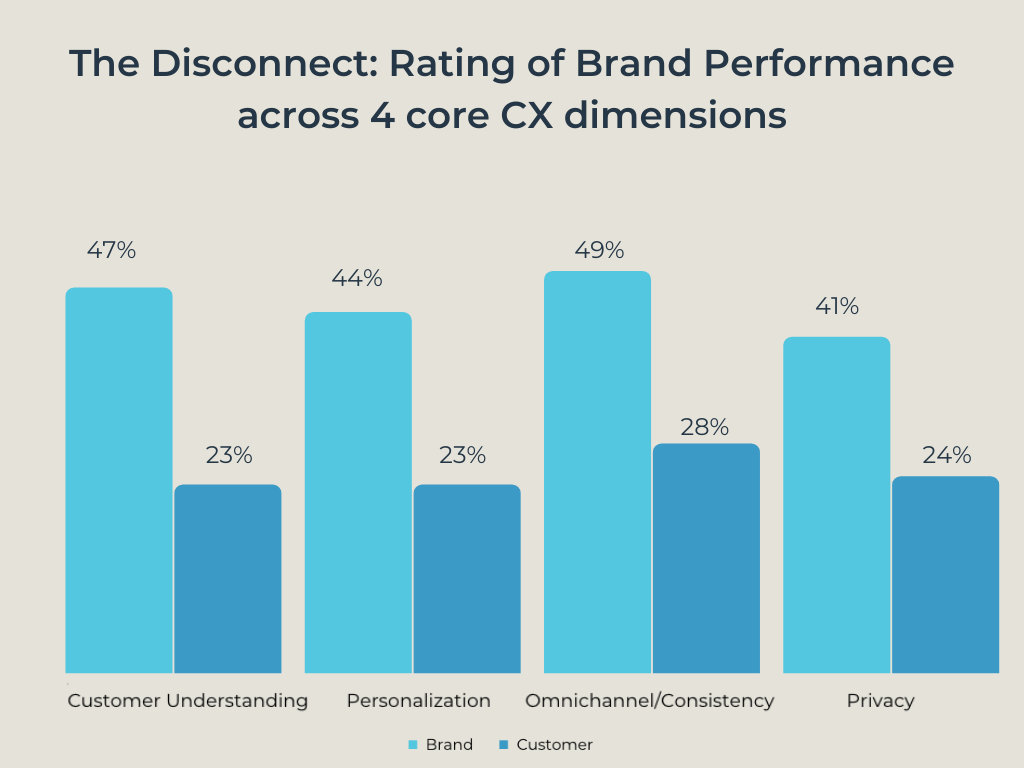
Every marketer tries to balance short-term opportunity and long-term sustainable growth. But the process with the dynamic consumer behavior and evolving expectations for marketing performance can be highly stressful and challenging.
A decade ago, the ways for consumer reach were narrow. Today, we have channels like Instagram, LinkedIn, Google search results, website chatbots, etc.
Want to know how marketers can reconcile the holistic journey and the objective-focused funnel and maximize their business’ potential impact on media and marketing strategies? Read on.
Marketers usually think they know more about customer understanding, omnichannel or consistency, personalization, and privacy. Yet, according to Harris Poll, only 26% of the customers believe that brands can deliver an exceptional customer experience against 51% of marketers.

The disconnect between brand and consumer shows the challenges associated with sales funnel-based strategy. The following four points illustrate that customer experience core dimensions are directly correlated to the complex, multi-touch-point customer journey:
Consumer expectations are changing and only getting higher. Like about 87% of consumers get frustrated if they have to repeat themselves in a new channel. Minimizing this error may take you a long way.

The picture above is called a sales funnel. It has brand-building awareness at the top. Here, marketers try to reach as many potential related customers as possible through their campaigns. After this, they move to the next stage: consideration.
You show more information to the people in the middle funnel, searching and showing high interest in buying a product. If you do your job right, those customers will have enough data to make the right decision. This is at the bottom of the funnel; the conversation stage. Once they convert, you’ve accomplished your goal: turning a prospect into an actual customer.
Most marketers are aware of some limitations of this framework. Post-conversion marketing does not look out more for loyalty and retention as the funnel illustrates a single purchase decision.
This is why you won’t necessarily see them under the conversion funnel.
The funnel is not a valuable illustration of customer behavior. It is not entirely accurate in expressing marketing priorities anymore. But it’s still important to understand and map KPIs.
Marketers have started using the multi-touchpoint customer journey to better understand how marketing works today, especially from a consumer point of view. However, reframing these interactions into a multi-touchpoint trip can be a challenge. More channels, touchpoints, and breakouts in various audience segments can get extremely complicated quick. It is not always clear what actions will have the most significant impact on the business.

Main point: Marketers need to focus on customers. Too much focus on the sales funnel will focus more on the brand’s priorities rather than on consumers. However, only focusing on the customer journey will make it difficult to align on specific objectives across teams.

Marketers cannot consider the customer journey and the sales funnel independently. Keeping this in mind, you will be able to understand customer behavior while aligning your brand’s priorities and business objectives. That starts with customer lifetime value (LTV).
Your high-value customers are your business’s most crucial asset. If you understand the critical touchpoints in their purchase journey, you can easily map them to the funnel stages and see growth in your business.
To form a more loyal audience, you must combine first-party and third-party data. Analyze the customer journey to know more about the effective touchpoints. Always focus on long-term brand awareness and high-value customers, short-terms sales goals will follow.
For maximum ROI, don’t just focus on conversions but also cultivate brand loyalty and improve customer lifetime value by offering personalized, cohesive experiences.
Here is a checklist to revolve this funnel vs. journey paradox